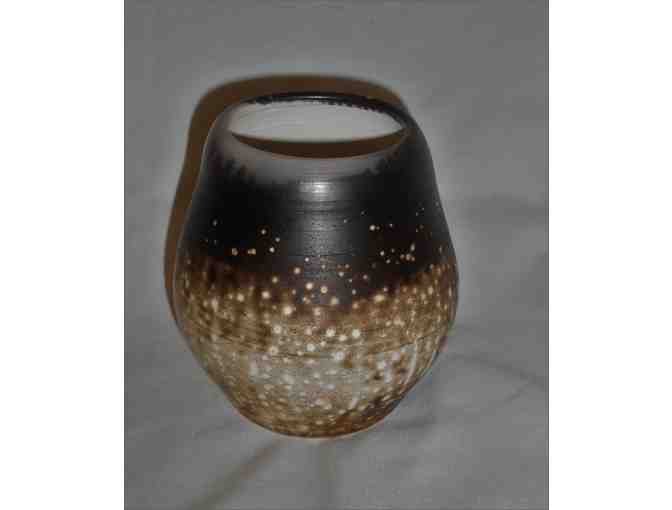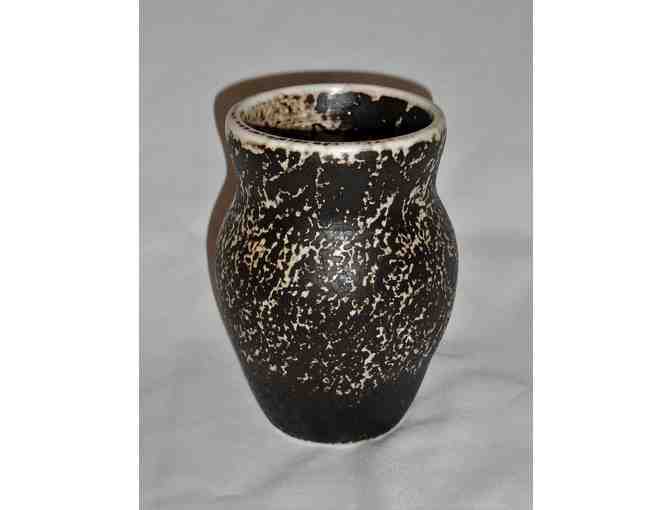Art
Handmade Obvara Vases by Tim Phillips
- Item Number
- 143
- Estimated Value
- 65 USD
- Sold
- 60 USD to jf562941d
- Number of Bids
- 4 - Bid History
Item Description
These two vases were hand made in the obvara technique by Tim Phillips fired at Baum School of Art in Allentown, PA. Finely finished with color variation and speckled decoration these pieces add beauty to any space. The smaller vase measures 4.75 inches tall with a 3 inch mouth. The larger one is 6 inches tall with a 3.75 inch mouth.
History of Obvara Pottery:
This is a technique originally used to seal low fire pottery. It is believed to have originated in Eastern Europe during the Middle Ages. There has recently been a revival of the process. The brew used during the process is a mixture of flour, yeast, sugar, and water. It is mixed, covered, and left to ferment for three days prior to the firing.
These two pottery pieces were thrown using a white stoneware clay. The pieces were coated with terra sigillata, burnished, and then bisque fired prior to the final firing.
Using a raku kiln, the pieces were heated to 1,650o F. They were then removed one at time, dunked in the brew, and then quickly plunged into water. The brew burns quickly on the surface of the piece before going into the water. The water stops the burning and color change. Pieces are the removed from the water and allowed to cool. Variations in the time pieces spend in the brew and air causes the uniqueness and beauty of obvara pieces.
About Tim Phillips:
I am a retired professor and took my first pottery class about two years ago at the Baum School of Art in Allentown, PA. Like many beginners, I started out making mugs and bowls for family and friends while continuing to work on improving my throwing and glazing skills.
Recently, I have begun focusing my efforts towards alternative kiln firing techniques including, raku, obvara, and horsehair pottery. These alternative firing techniques allow the potter to interact with the pottery while it is literally “red hot” as it is taken from the kiln (between 1,600o to 1,800o F). This post-kiln interaction allows for the creation of unique pottery, while employing techniques that are centuries old.
I am fascinated by the natural look of these pieces, which are the result of organic elements that, when placed on the pottery’s hot surface, are vaporized and leave behind their essence in shades of black and white.
Item Special Note
Winner is responsible for shipping or pick up costs.
Donated By:
Tim Phillips
Cooperstown Graduate Association stores data...
Your support matters, so Cooperstown Graduate Association would like to use your information to keep in touch about things that may matter to you. If you choose to hear from Cooperstown Graduate Association, we may contact you in the future about our ongoing efforts.
Your privacy is important to us, so Cooperstown Graduate Association will keep your personal data secure and Cooperstown Graduate Association will not use it for marketing communications which you have not agreed to receive. At any time, you may withdraw consent by emailing Privacy@frontstream.com or by contacting our Privacy Officer. Please see our Privacy Policy found here PrivacyPolicy.



